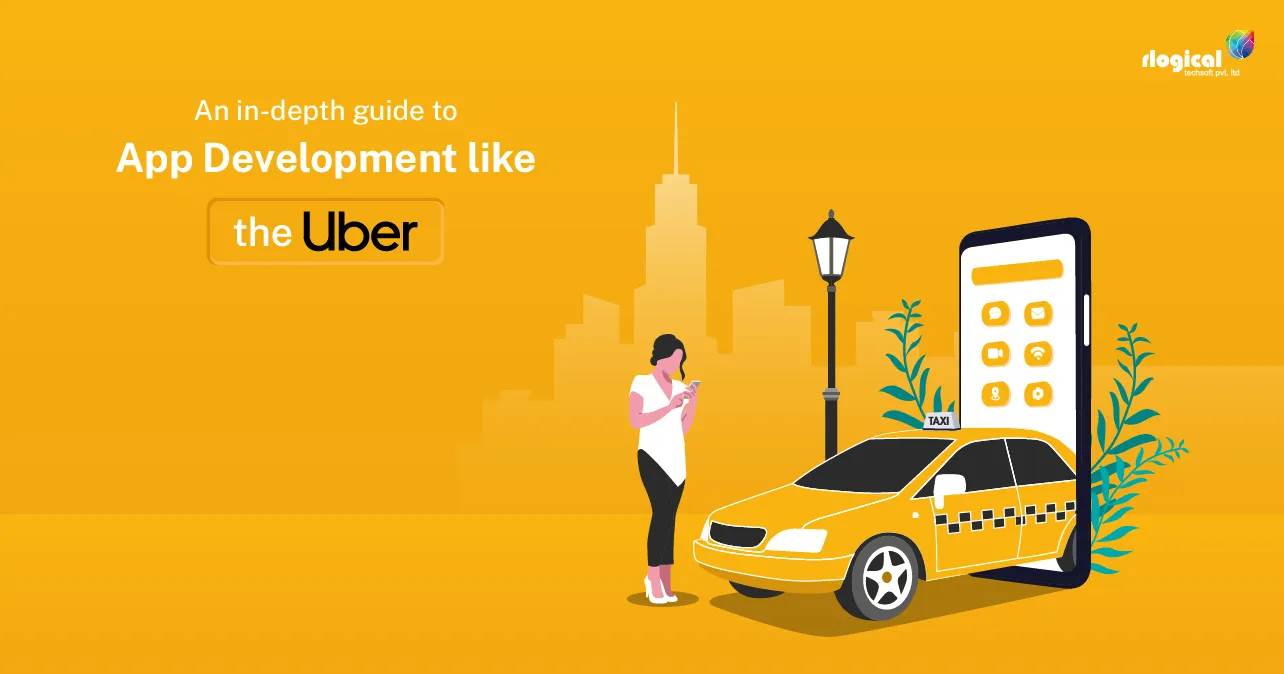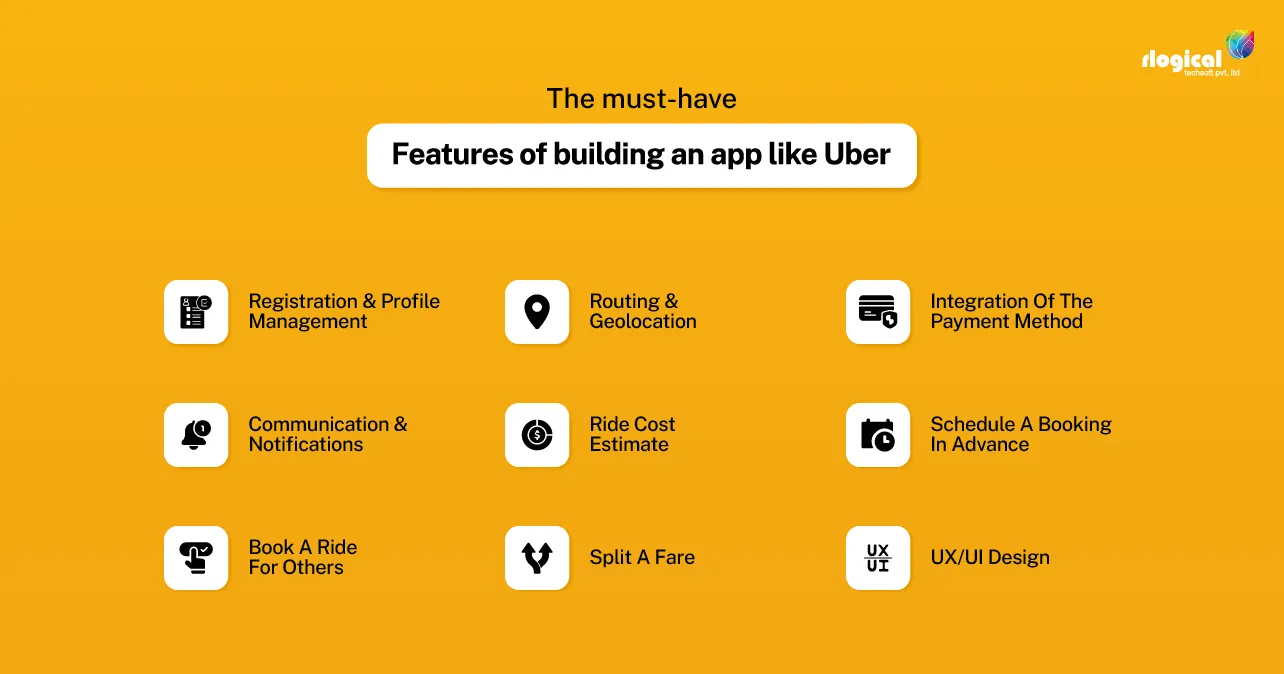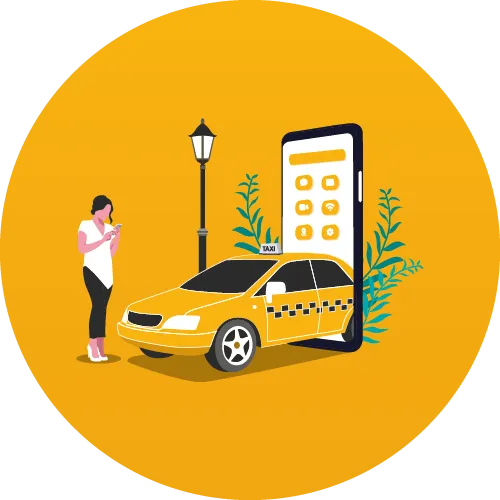
Today, in metropolitan urban communities where roads are fully loaded with traffic and lacking parking spots, ride-sharing applications like Uber have become an extraordinary help for individuals. Recently, the rapidly increasing demand for personal car rides has promoted business owners to consider how to build an App like Uber and launch it locally and globally.
To develop an app comparable to Uber, knowledge of the app development and technology alone will not suffice. There it would help if you had a comprehensive idea of the ride-sharing market before you hire an app developer or begin the development process. Transportation companies and entrepreneurs will benefit greatly from creating similar apps to Uber. However, it is more complex than waving a magic wand to create an app like Uber.
What Are The Must-Have Features Of Building An App Like Uber?

1. Registration And Profile Management
User registration and profile setup are very important features for a taxi booking app as they let you know about the users using it. Recently, it’s become a standard practice across all classes of apps to permit user enlistment through Facebook or Gmail.
The profile’s basic identity should include a photo, name, and phone number. Lastly, users ought to have access to a rating and review system. As a result, you can learn about your customers’ most pressing issues and utilize their feedback to enhance your service.
2. Routing And Geolocation
Geolocation is one of the most fundamental but necessary features of any taxi booking app like Uber. A large part of the ride-booking process rotates around distinguishing the client’s precise area.
For this purpose, GPS technology comes to the forefront. While dropping a pin on the map and locating the drivers in the area appears straightforward to the rider on the front end, a complex amount of processing and data sharing occurs behind the scenes.
From the second the application is sent off till the drop-off, a directing server works relentlessly to gauge the distance and run the courses. It uses the CoreLocation framework for iOS and Google’s location APIs for Android to locate the device. For iOS users, MapKit gives the driver directions to get from one location to another; for Android users, Google Maps Android API is used.
The Uber app has Google Maps integrated for both iOS and Android. However, it is independent of Google Maps; sometimes, it may rely on mapping technology teams to solve its logistical problems.
How Much It Will Cost You To Develop An APP Like YouTube
3. Integration Of The Payment Method
Advances in technology have made it commonplace to make payments online. Since Uber accepts cashless payments, this feature has become standard in all taxi booking apps. A fare calculator that provides a reasonable estimate of the cost of the ride is available to Uber customers. The four main criteria are as follows:
- Cost per mile
- Base fare
- Cost per minute
- Safe rides fee
Integrating a payment method should be done carefully to protect the user’s financial information. The payment system must be PCI-compliant to process credit card data. You could also select payment gateway providers like Braintree or Stripe that provide PCI compliance solutions.
4. Communication And Notifications
In a taxi app like Uber, the significance of timely communication cannot be overstated. Uber allows users to text and calls each other without leaving the app, making communication quick and easy. Nevertheless, during the crucial stages of the ride-booking process, the app sends email, SMS, and push notifications to keep the driver and rider on the same page.
Apple Push Notification Service makes push notifications possible for the iOS platform, while the Firebase Cloud Messaging service is used for Android. APIs like Nexmo, Twilio, and Plivo allow SMS notifications to be integrated.
5. Ride Cost Estimate
With this feature, riders can get an idea of how much their ride will cost based on where they pick up and drop off. An algorithm incorporated into the application is used to calculate the amount. Several charges should be shown if the location offers a different scope of conveyances for booking.
6. Schedule A Booking In Advance
Ride-Scheduling is an advanced feature that Uber introduced a few years ago and made popular. Users can reserve rides anywhere from 15 minutes to 30 days in advance. People who like to plan their trips ahead of time will appreciate this feature. It could be included in the initial MVP release or updates based on user feedback.
7. Book A Ride For Others
This feature is typically quite simple if you want to create an app similar to Uber. You can book rides for other people. In your profile, you can add a client as your relative and request a taxi for their sake. The taxi booking details will then be sent to this individual via notification, such as SMS.
8. Split A Fare
This is another advanced feature you must incorporate when creating an app like Uber. It allows users to spilt the bill with the companions they are travelling with.
9. UX/UI Design
It is not a feature, but you must consider it when building an app like Uber. Uber’s UI/UX is the most attractive, user-friendly, and secure; hence, Uber is overwhelming the ride-sharing business sector. As these apps are client-centric, you must provide users with a simple and easily understandable user design. Hire Mobile App Developer for UX/UI design to keep the app’s interface clear and simple.
What Are The Main Features To Add To The Driver’s App, Like The Uber App?
-
Driver Report
Driver report is a significant component from the perspective of both driver and rider’s security. The driver’s driving style and compliance with traffic laws over a week or month are briefly described in the report. The stage could boycott a driver, assuming it’s tracked down that they keep on driving recklessly or are engaged in a few driving offences.
-
Advanced Route Building
A taxi booking mobile app’s route-building feature provides cutting-edge performance. It makes the routes work best, which ultimately helps the drivers be more efficient. Customers ultimately receive superior service, allowing the app to gain popularity.
-
Driver Destinations
The driver destination feature has become quite popular in taxi booking apps like Uber to improve the driver’s experience. As a result, it ought to be taken into account as part of the app’s development. Drivers can select a preferred location with this feature, and passengers looking for a ride can be found there.
-
Heat Maps
Drivers who want to make the most of their time should have access to heat maps. Areas with the highest number of ride requests can be seen on the heat map. These locations can be reached by drivers who want to make more money and start taking ride requests there. Last but not least, there is the admin panel, which typically requires web-based work from a web development company. You can manage payrolls and user data while also getting a clear picture of the ongoing business operations from an admin panel.
-
Cancellation Of Rides Without Penalty
This is an essential feature if you want your rides to be extremely comfortable. Uber permits their riders to drop the ride shortly without causing punishments or undoing charges. When a customer cancels a ride or delays a booked ride, the feature is specifically designed to save money and time.
A Guide To Develop A Perfect Food Delivery App Like DoorDash
What Is The Cost Of Building A Mobile Application Like Uber?
1. Features
The total cost of an app is directly correlated with a set of features. As mentioned earlier, an app can have any number of features, from the simplest to the most complex. An MVP is typically the foundation upon which a mobile app for booking taxis is built. This includes the admin, rider, and passenger apps, which have few features. Uber began similarly.
The Uber app didn’t have cost-splitting or gamification features when it first came out. It was made with one main goal: connecting passengers and drivers and offering a payment option within the app. That was what Uber was able to accomplish with a positive response. An MVP helps determine the feasibility of an idea and gathers useful early adopter feedback. The same can then be applied to product enhancement by adding useful features.
2. Platform Selection
Should I build for the dependable iOS community or the ever-expanding Android user base? The query appears to always stay young. It is always recommended for businesses with limited resources to proceed with an MVP version on either platform and learn from user feedback. Since the iOS platform was extremely popular then, particularly in the Western world, Uber initially built for it. However, if you have the money, develop apps for both platforms to reach more people in any area.
3. Type Of Business
A company’s current position significantly impacts the type of solution it would select. For instance, a company that already offers a taxi booking service would like mobile apps tailored to its internal processes. A significant capital outlay will be required for this. However, to support its short-term goal of gaining traction, a startup taxi booking business would look to develop a mobile app with limited functionality. In this scenario, development costs will be significantly lower than in the previous one.
4. Technology
You must choose the technology that will power your mobile apps, just like the platform. It comes down to Hybrid or Native as the option. Native app development is the option that most people choose. Only a small number of business owners choose hybrid for a specific purpose. In terms of the programming languages and architecture they employ, hybrid and native are distinct. There is no definite figure that can be used to define the cost of developing an app like Uber. The following is the global average rate, as provided by Statista:
- North America — $60-250 every hour
- Joined Realm — $60-150 every hour
- Western Europe — $40-120 every hour
- Eastern Europe — $20-100 every hour
- India — $10-80 every hour
To reiterate the point, these figures should be viewed with caution. They only take into account averages. Additional costs may be discovered by thoroughly discussing the project with a development partner. Several factors influence the cost of developing an Uber-like mobile app. The expertise and number of resources of two mobile app development companies in the same area can lead to significant price differences. Above are a few of the most important factors that affect development costs.
Conclusion
Although global cab/taxi booking giants like Uber have established themselves as market leaders, there is still plenty of room for new players to innovate. It can be pricy to develop this advanced application for startups and small businesses. This blog discusses the application’s price, development time, and each component and feature.
As a result, the business owner can select and modify the application’s structure to fit their requirements and financial constraints. Later, you can also get in touch with the mobile app development company to add advanced features to the app and promote the business you already have with carefully designed marketing campaigns.
Jatin Panchal
Jatin Panchal is Founder & Managing Director of Rlogical Techsoft Pvt. Ltd, a custom web & mobile app development company specialized in Outsourcing Web Development Services, Android, iOS and IoT App development.
Related Blog
- How to Build a Language Learning Mobile App Like Duolingo?
- Build a Doctor Appointment App like Zocdoc: Guide for Healthcare Sector
- How to Build a Mobile Banking App like Chime to Boost ROI?
- How to Develop a Taxi Booking App Like Uber? All-in-One Guide
- Build Your Online Ticket Booking App, Inspired by Ticketmaster!
Categories
- All
- Amazon Web Services (AWS)
- ASP.Net Development
- Azure Web App
- Big Data Analytic
- Customize
- Digital Marketing
- Drupal Development
- E-commerce web development
- Education Mobile App Development
- Enterprise Application
- Event Management App Development
- Fintech
- Fitness App Development
- Food Delievery
- Front-End Development
- Healthcare App Development
- Hire Dedicated Developers
- Hotel Booking App
- IT Industry
- JavaScript Development
- Mobile App Development
- On Demand App Development
- On Demand Healthcare App Development
- PHP Development
- POS Software Development
- Real Estate Mobile App Development
- Retail Business App Development
- Salesforce
- Social Media Development
- Software Development
- Technology
- Transportation App Development
- UI/UX Design
- Web Design
- Web Development
- Web Services
- Web/Data Scraping Services
- WordPress
Get in Touch
Contact Us
3728 N Fratney St Suite 213, Milwaukee, WI 53212, United States
Sales Executive: +1 414 253 3132
Contact Email: [email protected]
701 & 801 Satkar Complex, Opp Tanishq Showroom,Behind Lal Bungalow, Chimanlal Girdharlal Rd, Ahmedabad, Gujarat 380009
Rahul Panchal: +91-9824601707
Jatin Panchal: +91-9974202036
Contact Email: [email protected]
301 1-28-21 Hayabuchi, Tsuzuki-ku, Yokohama-shi, Kanagawa 224-0025, Japan
Contact Email: [email protected]



 Jatin Panchal in On Demand App Development
Jatin Panchal in On Demand App Development 
